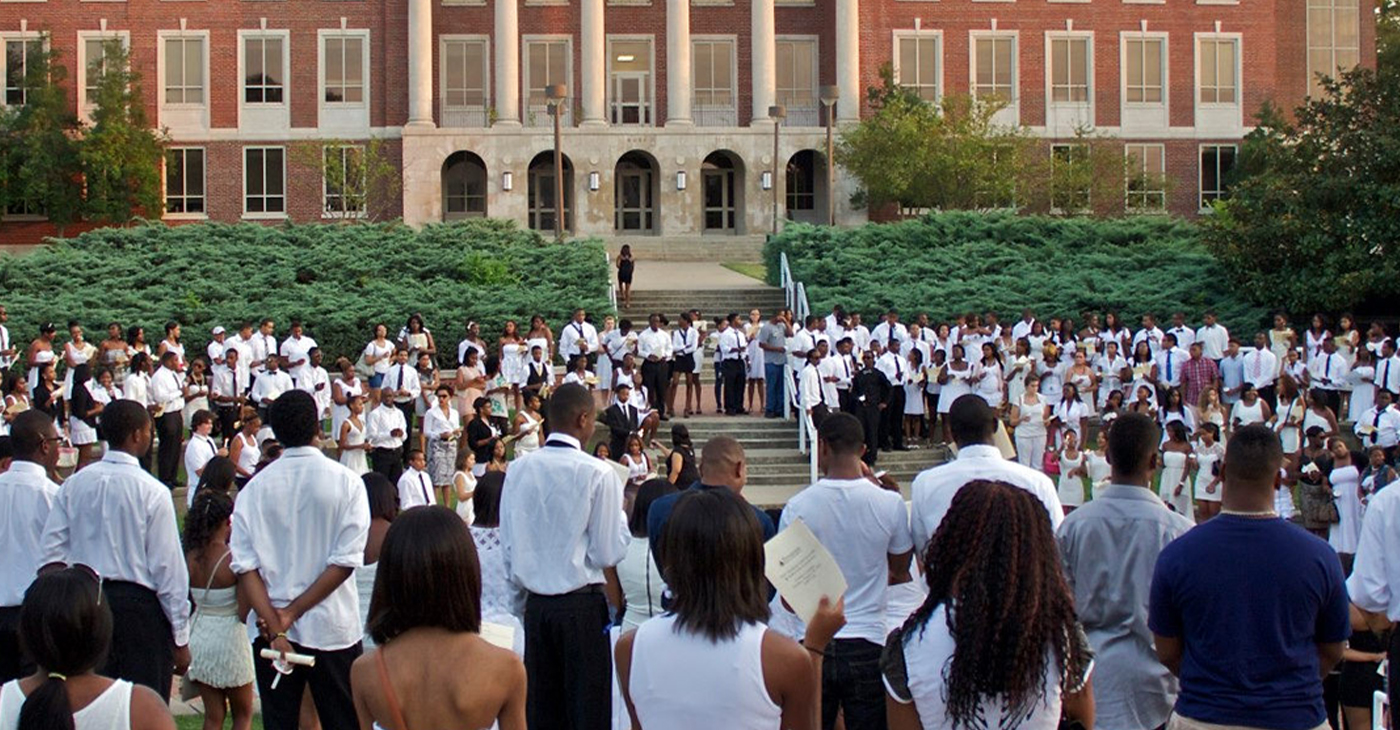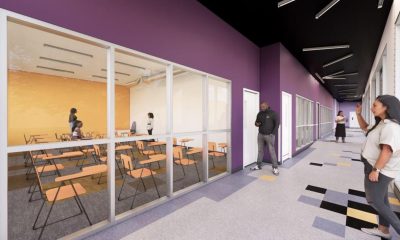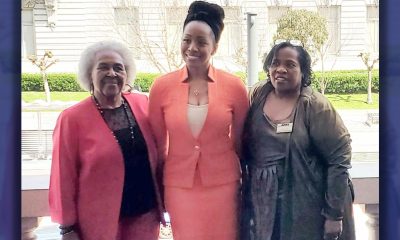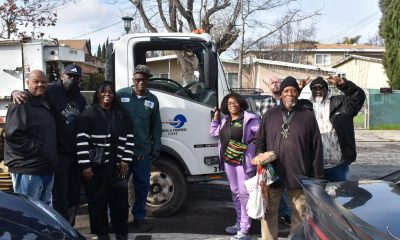#NNPA BlackPress
Three Black People Murdered in Jacksonville at the Hands of a White Supremacist with an AK-47
A white racist named Ryan Palmeter, 21, shot and killed three Black people at a Dollar Store in Jacksonville, Florida on August 26. The incident is the latest mass murder by a white supremacist in the U.S. Police told the public at an August 26 press conference that Palmeter used a Glock and an AR-15.
The post Three Black People Murdered in Jacksonville at the Hands of a White Supremacist with an AK-47 first appeared on BlackPressUSA.

By Lauren Burke
NNPA Capital Hill Contributor
Publisher, Black Virginia News
A white racist named Ryan Palmeter, 21, shot and killed three Black people at a Dollar Store in Jacksonville, Florida on August 26. The incident is the latest mass murder by a white supremacist in the U.S. Police told the public at an August 26 press conference that Palmeter used a Glock and an AR-15. At least one of the weapons had swastikas on it and, like several other white racist murderers, Palmeter wrote several messages about his racist ideology and sent them to the authorities and his parents before the murders.
In May this year, the NAACP issued a travel advisory warning Black Americans about Florida under Governor Ron DeSantis. DeSantis, who has said Florida is “where woke goes to die,” has repeatedly branded himself to anti-Black policies and has used the word “woke” as a substitute for Black agenda policy. The modern use of the word “woke” became popular in the Black community after the 2014 murder of Michael Brown in Ferguson, Missouri by Police Officer Darren Wilson.
The NAACP advisory warned Black Americans that, “Florida is openly hostile toward African Americans… Before traveling to Florida, please understand that the state of Florida devalues and marginalizes the contributions of, and the challenges faced by African Americans and other communities of color.” At a congressional hearing in March 2021, FBI Director Chris Wray confirmed that racist extremists are a steadily growing problem in the U.S., saying, “domestic violent extremism, domestic terrorism, that number is now — has grown steadily on my watch.”
The triple homicide at the Dollar Store is near Edward Waters University, a Historically Black College, in Jacksonville. The school was founded in 1866 by the AME Church. Several news organizations report that the shooter visited Edward Waters University before the shooting and was asked to leave the campus. “This shooting was racially motivated and he hated Black people,” Jacksonville Sheriff T.K. Waters said during a press conference on the night of August 26. Palmeter shot himself before police could apprehend him. “The shooter offered several manifestos,” Sheriff Waters also stated.
Last year, in May 2022, a white racist 18-year-old named Payton Gendron murdered ten Black people in a Tops Friendly supermarket in Buffalo, New York. Gendron wrote a manifesto that focused on the “great replacement” conspiracy theory that white people were being outnumbered by minorities. Gendron drove from Conklin, New York to Buffalo and live-streamed the murders live on Twitch. Ryan Palmeter drove from Oakleaf, Florida to Jacksonville and reportedly has a history of mental illness but was still able to purchase an AK-47.
“The rhetoric of hate by those in the public eye & on public platforms has consequences. At this point, escalating that rhetoric while loosening gun protections is a setup that targets our communities for violence,” wrote attorney Sherrilyn Iffill on August 26 hours after the shooting. “Ron DeSantis has been leading a hate-motivated war against Black people and all marginalized communities in Florida. It’s been vicious, racist, and contemptible. So, no one should be surprised that violence and death follows in the wake of his state-sanctioned bigotry. The @gop has let the rabid dogs off the leash, with neither the ability nor desire to get it back on.” wrote journalist Dave Zirin on social media.
In 2015, a white 21-year-old racist named Dylan Roof entered a bible study at Emanuel African Methodist Episcopal Church in Charleston, South Carolina, and murdered nine African Americans including the church’s senior pastor, State Senator Clementa C. Pinckney. Roof also wrote a “manifesto” before the shooting. In 2017, a white racist named James Alex Fields Jr. deliberately rammed a car into a group of people protesting thousands of racists who gathered in Charlottesville, Virginia as part of the Unite the Right rally. Fields murdered 32-year-old Charlottesville resident Heather Heyer. In 2018, a white racist named Robert Gregory Bowers, 46, murdered 11 people at the Tree of Life synagogue during Shabbat morning services in Pittsburgh.
The post Three Black People Murdered in Jacksonville at the Hands of a White Supremacist with an AK-47 first appeared on BlackPressUSA.
#NNPA BlackPress
IN MEMORIAM: Ramona Edelin, Influential Activist and Education Advocate, Dies at 78
NNPA NEWSWIRE — Born on September 4, 1945, in Los Angeles, California, activist Ramona Edelin’s early years were marked by a commitment to education and social justice. According to her HistoryMakers biography, after graduating from Fisk University with a Bachelor’s degree in 1967, she pursued further studies at the University of East Anglia in England. She earned her master’s degree before completing her Ph.D. at Boston University in 1981.
The post IN MEMORIAM: Ramona Edelin, Influential Activist and Education Advocate, Dies at 78 first appeared on BlackPressUSA.

By Stacy M. Brown, NNPA Newswire Senior National Correspondent
@StacyBrownMedia
Once upon a time, Black Americans were simply known as colored people, or Negroes. That is until Ramona Edelin came along. The activist, renowned for her pivotal roles in advancing civil rights, education reform, and community empowerment, died at her D.C. residence last month at the age of 78. Her death, finally confirmed this week by Barnaby Towns, a communications strategist who collaborated with Dr. Edelin, was attributed to cancer.
Born on September 4, 1945, in Los Angeles, California, Edelin’s early years were marked by a commitment to education and social justice. According to her HistoryMakers biography, after graduating from Fisk University with a Bachelor’s degree in 1967, she pursued further studies at the University of East Anglia in England. She earned her master’s degree before completing her Ph.D. at Boston University in 1981.
Edelin’s contributions to academia and activism were manifold. She was pivotal in popularizing the term “African American” alongside Rev. Jesse L. Jackson in the late 1980s.
Jackson had announced the preference for “African American,” speaking for summit organizers that included Dr. Edelin. “Just as we were called Colored, but were not that, and then Negro, but not that, to be called Black is just as baseless,” he said, adding that “African American” “has cultural integrity” and “puts us in our proper historical context.”
Later, Edelin told Ebony magazine, “Calling ourselves African Americans is the first step in the cultural offensive,” while linking the name change to a “cultural renaissance” in which Black Americans reconnected with their history and heritage.
“Who are we if we don’t acknowledge our motherland?” she asked later. “When a child in a ghetto calls himself African American, immediately he’s international. You’ve taken him from the ghetto and put him on the globe.”
The HistoryMakers bio noted that Edelin’s academic pursuits led her to found and chair the Department of African American Studies at Northeastern University, where she established herself as a leading voice.
Transitioning from academia to advocacy, Edelin joined the National Urban Coalition in 1977, eventually ascending to president and CEO. During her tenure, she spearheaded initiatives such as the “Say Yes to a Youngster’s Future” program, which provided crucial support in math, science, and technology to youth and teachers of color in urban areas. Her biography noted that Edelin’s efforts extended nationwide through partnerships with organizations like the National Science Foundation and the United States Department of Education.
President Bill Clinton recognized Edelin’s expertise by appointing her to the Presidential Board on Historically Black Colleges and Universities in 1998. She also co-founded and served as treasurer of the Black Leadership Forum, solidifying her standing as a respected leader in African American communities.
Beyond her professional achievements, Edelin dedicated herself to numerous boards and committees, including chairing the District of Columbia Educational Goals 2000 Panel and contributing to the Federal Advisory Committee for the Black Community Crusade for Children.
Throughout her life, Edelin received widespread recognition for her contributions. Ebony magazine honored her as one of the 100 Most Influential Black Americans, and she received prestigious awards such as the Southern Christian Leadership Award for Progressive Leadership and the IBM Community Executive Program Award.
The post IN MEMORIAM: Ramona Edelin, Influential Activist and Education Advocate, Dies at 78 first appeared on BlackPressUSA.
#NNPA BlackPress
Tennessee State University Board Disbanded by MAGA Loyalists as Assault on DE&I Continues
NNPA NEWSWIRE — Recent legislative actions in Tennessee, such as repealing police reform measures enacted after the killing of Tyre Nichols, underscore a troubling trend of undermining local control and perpetuating racist agendas. The new law preventing local governments from restricting police officers’ authority disregards community efforts to address systemic issues of police violence and racial profiling.
The post Tennessee State University Board Disbanded by MAGA Loyalists as Assault on DE&I Continues first appeared on BlackPressUSA.

By Stacy M. Brown, NNPA Newswire Senior National Correspondent
@StacyBrownMedia
Tennessee State University (TSU), the state’s only public historically Black college and university (HBCU), faces a tumultuous future as Gov. Bill Lee dissolved its board, a move supported by racist conservatives and MAGA Republicans in the Tennessee General Assembly, who follow the lead of the twice-impeached, four-times indicted, alleged sexual predator former President Donald Trump. Educators and others have denounced the move as an attack on diversity, equity, and inclusion (DE&I) and a grave setback for higher education.
Critics argue that TSU’s purported financial mismanagement is a manufactured crisis rooted in decades of underinvestment by the state government. They’ve noted that it continues a trend by conservatives and the racist MAGA movement to eliminate opportunities for Blacks in education, corporate America, and the public sector.
Gevin Reynolds, a former speechwriter for Vice President Kamala Harris, emphasizes in an op-ed that TSU’s financial difficulties are not the result of university leadership because a recent audit found no evidence of fraud or malfeasance.
Reynolds noted that the disbanding of TSU’s board is not an isolated incident but part of a broader assault on DE&I initiatives nationwide. Ten states, including Tennessee, have enacted laws banning DE&I policies on college campuses, while governors appointing MAGA loyalists to university trustee positions further undermine efforts to promote inclusivity and equality.
Moreover, recent legislative actions in Tennessee, such as repealing police reform measures enacted after the killing of Tyre Nichols, underscore a troubling trend of undermining local control and perpetuating racist agendas. The new law preventing local governments from restricting police officers’ authority disregards community efforts to address systemic issues of police violence and racial profiling.
The actions echo historical efforts to suppress Black progress, reminiscent of the violent backlash against gains made during the Reconstruction era. President Joe Biden warned during an appearance in New York last month that Trump desires to bring the nation back to the 18th and 19th centuries – in other words, to see, among other things, African Americans back in the chains of slavery, women subservient to men without any say over their bodies, and all voting rights restricted to white men.
The parallels are stark, with white supremacist ideologies used to justify attacks on Black institutions and disenfranchise marginalized communities, Reynolds argued.
In response to these challenges, advocates stress the urgency of collective action to defend democracy and combat systemic racism. Understanding that attacks on institutions like TSU are symptomatic of broader threats to democratic norms, they call for increased civic engagement and voting at all levels of government.
The actions of people dedicated to upholding the principles of inclusivity, equity, and justice for all will determine the outcome of the ongoing fight for democracy, Reynolds noted. “We are in a war for our democracy, one whose outcome will be determined by every line on every ballot at every precinct,” he stated.
The post Tennessee State University Board Disbanded by MAGA Loyalists as Assault on DE&I Continues first appeared on BlackPressUSA.
#NNPA BlackPress
Braxton Haulcy and the Expansion of Walker|West Music Academy
May 24, 2023 – Walker West Music Academy gets an early start on expansion. Join us for a Wednesday episode of The …
The post Braxton Haulcy and the Expansion of Walker|West Music Academy first appeared on BlackPressUSA.

May 24, 2023 – Walker West Music Academy gets an early start on expansion. Join us for a Wednesday episode of The …
The post Braxton Haulcy and the Expansion of Walker|West Music Academy first appeared on BlackPressUSA.
-

 Activism4 weeks ago
Activism4 weeks agoOakland Post: Week of March 27 – April 2, 2024
-

 #NNPA BlackPress4 weeks ago
#NNPA BlackPress4 weeks agoBeloved Actor and Activist Louis Cameron Gossett Jr. Dies at 87
-

 Community1 week ago
Community1 week agoFinancial Assistance Bill for Descendants of Enslaved Persons to Help Them Purchase, Own, or Maintain a Home
-

 Activism3 weeks ago
Activism3 weeks agoOakland Post: Week of April 3 – 6, 2024
-

 Business2 weeks ago
Business2 weeks agoV.P. Kamala Harris: Americans With Criminal Records Will Soon Be Eligible for SBA Loans
-

 Activism2 weeks ago
Activism2 weeks agoOakland Post: Week of April 10 – 16, 2024
-

 Community2 weeks ago
Community2 weeks agoAG Bonta Says Oakland School Leaders Should Comply with State Laws to Avoid ‘Disparate Harm’ When Closing or Merging Schools
-

 Community7 days ago
Community7 days agoOakland WNBA Player to be Inducted Into Hall of Fame






















































